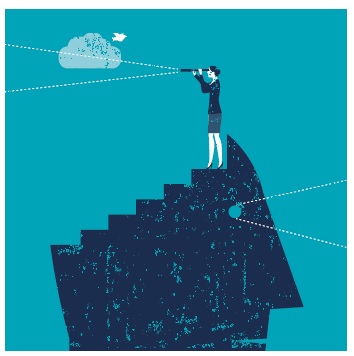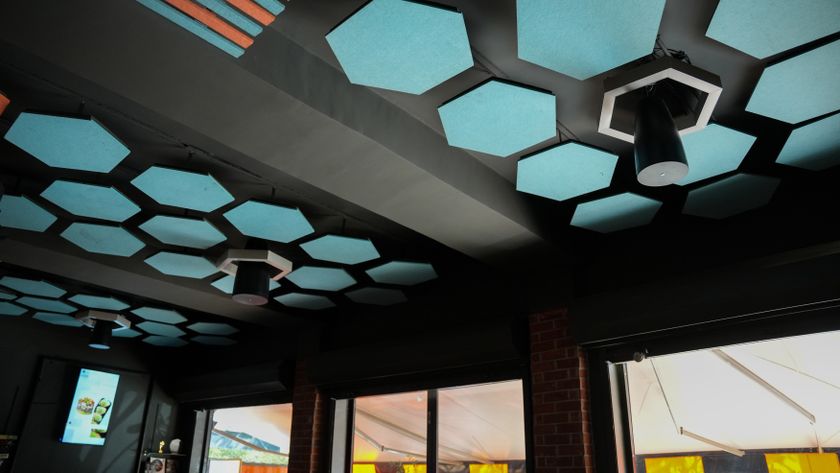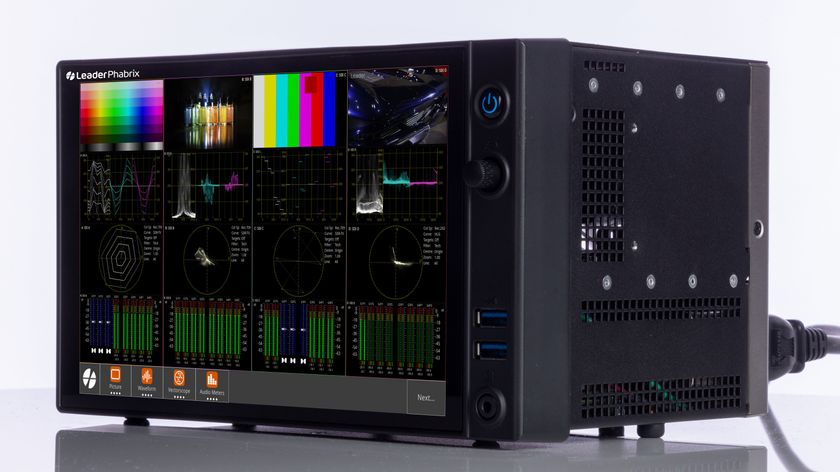Innovation. It’s a word that’s applied to everything from off-grid sustainable energy, mobile communications, pharmaceuticals, and automobile manufacturing, to men’s razors, house paint, quick-dry nail polish, and non-smear lipstick. In our minds, it conjures up a sort of modern Parthenon atop which sit its own gods and their brands: Jobs. Apple. Gates. Microsoft. Zuckerberg. Facebook. Tesla. Musk. It’s a word that’s evolved into a term, a term that treads the tenuous tightrope between real meaning and marketing hype, a term that has spawned its own offshoots (Game-changer! Disruptive!). And yet, we all strive for it, each in our own way, even if we’re not always 100 percent sure of what “it” really is. (Who, after all, wants to be labeled “status quo”?) As an industry, AV has celebrated a respectable number of game-changing, disruptive developments that have broken things for the better. But today, in a competitive climate where one can never be innovative enough, how can AV approach innovation?
For individual organizations, a good starting point is determining what kind of innovation you’re striving for. Do you want to be the next Facebook, and develop a solution to a problem that people weren’t consciously aware of? (Connecting long-lost friends who hadn’t thought about each other in years.) Or, do you want to be the next Jabber, and provide a new solution to an existing problem? (Build an enterprise-ready instant messaging platform that allows professionals to IM each other in a secure environment.) “There are two angles to how innovation plays out. One is where an organization is fundamentally trying to do something differently, and they try to create a new business process to change the way they work, they decide what it is they’re trying to do, and what the business benefits are of them doing that, and then they go and seek technology to help them to affect that business change,” said Julian Phillips, executive vice president at Whitlock, an AV and UC solutions provider headquartered in Richmond, VA. Then there is the pure tech angle: someone brings an entirely new technology to market, which then drives innovation and change. One of the best examples of this, he said, is the iPhone.
Phillips argues that the AV industry has been guilty of over-innovating product to the point where a technology may be called innovative when in fact it’s not. “It does the same function in the same way; it just happens to be another shiny thing,” he said. “We need to approach it from the other angle, which is: how do we actually present our technology as a platform so that it enables our customers to enact business process change?”
To succeed at this, AV professionals must have a clear understanding of their customers’ businesses, their present pain points, where they’re headed in the future, and what new issues will arise as a result. “It means that you have to have not only salespeople, but design engineers that understand that business cycle, and that can actually design unique and compelling solutions,” Phillips said. In doing this, AV integration firms must shift their focus from being product-based to solutions and service-based, which mandates the need for those skilled in solution selling. And this, he adds, requires integrators to make the investment in recruiting people who possess these skills, as well as training existing employees so that they can acquire them.
One could argue that the creation of Audio Video & Controls Inc. back in 1999 was an innovation in and of itself. While it does design and integration, the New York-based firm, which employs a combination of architects, designers, engineers, software programmers, and IT and AV professionals, isn’t a design and integration organization in the traditional sense. Its clients, made up of architects, museum designers, and creative agencies, seek out its expertise in the creation of compelling physical environments that tell a story, that have never been built before, and that apply technology to bring a space to life. “We’re essentially about marrying creativity and technology in the physical environment,” explained founder David Bianciardi. “That means that we have to bridge between our creative partners and the physical realities of putting systems into buildings that have to operate successfully for five or 10 years.” Because “new, never been done before” is what its clientele is after, AV&C’s job is to, quite literally, break things. “The approach we’ve taken is combining things in a way that the manufacturers didn’t imagine they would be combined, and getting a result that nobody else was getting because we’re intersecting things differently than, maybe, was intended by the manufacturer, or was expected by the engineers that developed it.”
Bianciardi admits that innovation isn’t his end goal, but that it’s the result when you follow a good process. “It’s like asking a scientist: how do you do science? There’s actually a process, there’s a process called the scientific method that means that you’re doing science. It’s how you ask the questions and the rigor with which you pursue the answers.” The same concept can apply to the design and integration of technology into a space. “Architects and designers have a process for approaching a problem with curiosity and open-mindedness that I think is often lost in more technical organizations because in a lot of cases, they’ve been hired to know the answer. They’ll show up at a first meeting and within 10 minutes, they’re spouting part numbers because they’ve got the answer. And that’s just not what we do. We go in and we say we don’t know the answer, and we’re curious about what the client’s imagination is concocting, and we don’t use our technical savvy to shut down the conversation.” Preconceived notions don’t have a place in this type of process.
David Kung, vice president of business development at collaboration platform developer Oblong, based in Los Angeles, CA, believes that people need to be trained how to be innovative. “You can’t just tell people to be innovative. You have to teach them tools on ways of thinking outside the box. You have to teach a tolerance for failure,” he said. Innovation, then, becomes a practice, and one that needs to be encouraged and nurtured. “What you really want to do is create a favorable environment and conditions for positive outcomes.”
A number of Oblong’s own employees came out of the MIT Media Lab. While the age-old mantra of academia is “publish or perish,” at the Media Lab, it was “demo or die.” “It was: Always be creating something new. Always be demonstrating a new idea,” Kung relayed. He explained that this has made its way into Oblong’s process through the form of regular meetings where employees are urged to share what they’re working on. “It could be a major innovation or it could just be a design exploration.” This environment of sharing is ingrained in the company’s culture, and as a result, employees are expected to be constantly coming up with new ideas, putting them into practice, and presenting them to their peers for review.
The innovation process is not unlike problem-solving, and to do it effectively, there needs to exist some ground rules. Without them, would-be innovators run the risk of creating bottlenecks. “We all bring biases to problem-solving, and our biases are often times based on prior experience, they’re based on emotion, and they’re based on ego,” said Rob Balgley, CEO at collaboration solutions developer Mersive, based in Denver, CO (Balgley is also the former CEO of Jabber). At Mersive, he explained, problem-solving focuses on the facts. “It’s a matter of intellectual honesty and just being ruthless and fact-based in terms of solving things and not letting dogma enter the discussion…If you stick to logic and you stick to facts, I think that’s a way of nurturing innovation as opposed to people playing out their individual biases or their resistance to change.”
Carolyn Heinze is a freelance writer/editor.

Rob Balgley, CEO, Mersive
“Innovation means that you’re matching a new technology to an existing problem. I know people think about innovation as matching a new technology to a new problem. If you look at something like Facebook, that’s a different type of innovation. That was a problem that probably didn’t exist, and when that happens, it’s brilliant…Certainly there’s room for innovation where you’re not only innovating the solution but you’re innovating the problem. There is that, and oftentimes when you get that right, you do create something like Google or Facebook. Guys like me, we tend to look for existing problems.”

David Bianciardi, founder, Audio Video & Controls
“I can’t tell you that I’m some visionary that wakes up in the morning and meditates on how I’m going to innovate today. And there are those people––we know that–– where innovation is the watchword. For me, innovation is not the goal; it’s the result. It’s a three-legged stool: it’s our people and the eclectic mix of interdisciplinary folks that we bring to the table and that we attract; it’s the way we go to market and the way we position ourselves; and the project processes that we bring to bear. Those are the three things, and they all inform each other.”

Julian Phillips, executive vice president, Whitlock
“My definition of innovation––and you can take this back to the dictionary definition of it––is: how do we fundamentally do something differently through the application of a new idea, or a new concept, or a new way? Not just bringing [out] new product for the sake of having new product.”

David Kung, vice president of business development, Oblong
“Innovation, specifically in the workplace, is when something fundamental and unexpected changes the nature of work, either what we work on, or how we work––the structure of producing that work product. When companies talk about innovation, the most important thing is to define it. Is innovation the end goal? Or is it really a change in work style and process, where you want innovation to be the output?”











